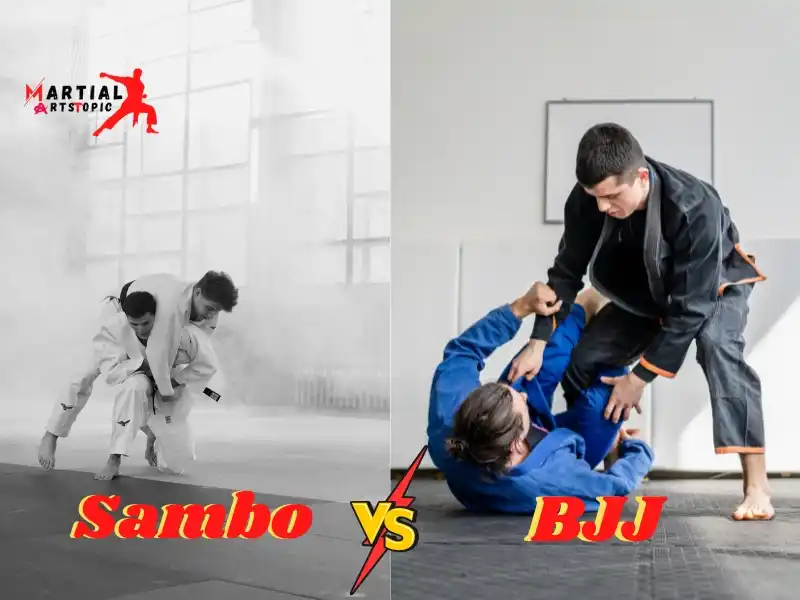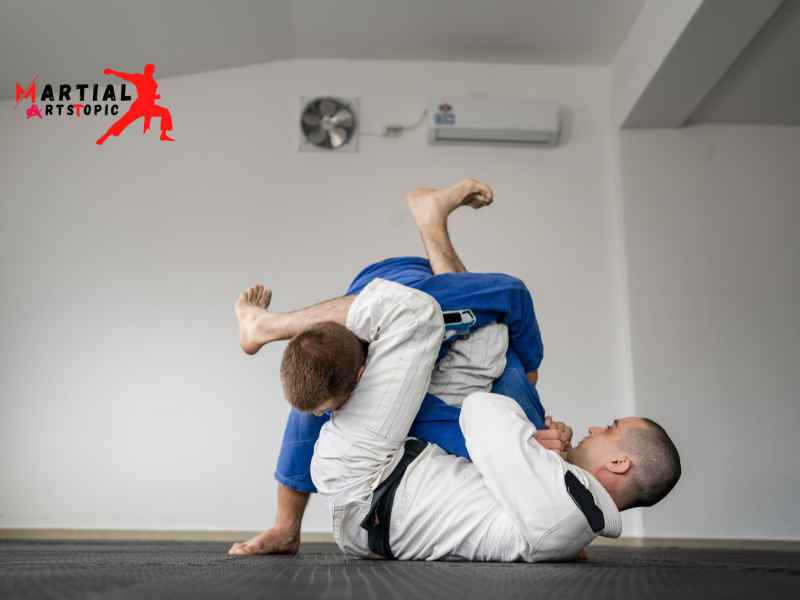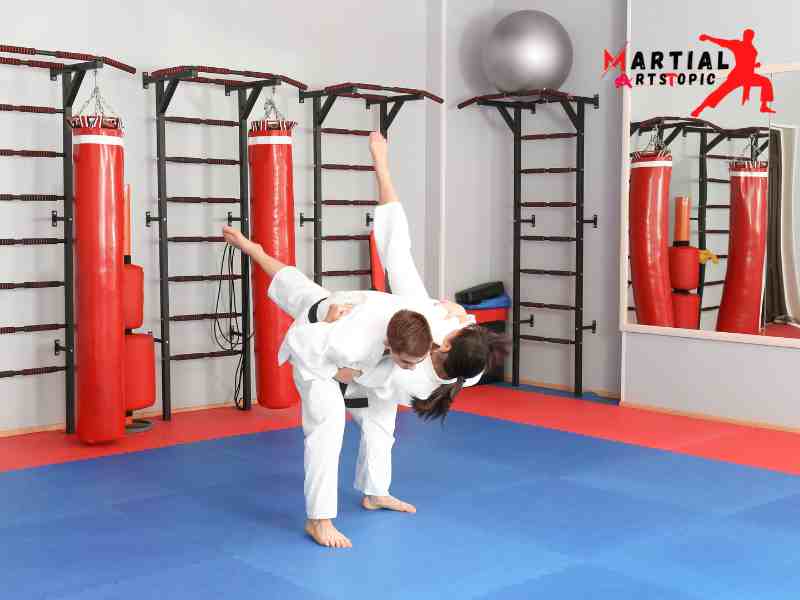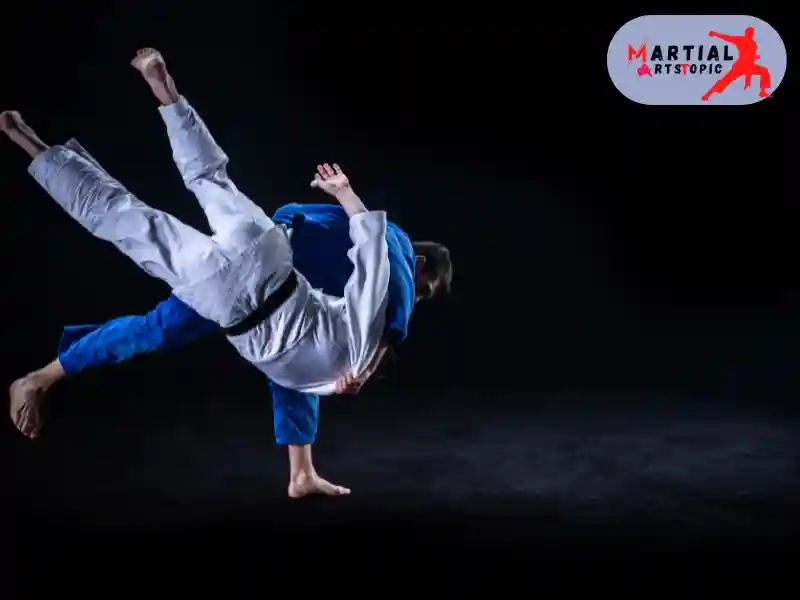
Sambo vs BJJ: Which Martial Art Reigns Supreme?
When it comes to martial arts, the debate between Sambo and Brazilian Jiu-Jitsu (BJJ) has been ongoing for years. Both disciplines have their own unique techniques, philosophies, and strengths, making it difficult to determine which one reigns supreme. The world of Sambo and BJJ, comparing and contrasting their key aspects to help you gain a better understanding of these two fascinating martial arts.Originating in Russia, Sambo is a martial art and combat sport that focuses on grappling and self-defense techniques. It encompasses a blend of judo, wrestling, and other traditional martial arts, emphasizing throws, takedowns, joint locks, and ground control. Sambo practitioners are known for their versatility and adaptability in various combat situations, making it a formidable martial art for both sport and self-defense.
On the other hand, Brazilian Jiu-Jitsu, developed in Brazil, has gained immense popularity worldwide for its emphasis on ground fighting and submission techniques. BJJ practitioners are renowned for their exceptional grappling skills, utilizing leverage and technique to overcome larger and stronger opponents. Focusing strongly on positional control and submissions, BJJ has proven to be highly effective in both sport competitions and real-life self-defense scenarios.
Now, let’s dive into the comparison between Sambo and BJJ across different aspects:
- Techniques: Sambo incorporates an array of techniques, including throws, sweeps, and joint locks, with an emphasis on both standing and ground-based combat. BJJ, on the other hand, focuses extensively on ground fighting, utilizing positions such as the guard, mount, and back control to execute various submissions like chokes and joint locks.
- Philosophy: While both martial arts emphasize technique and leverage over brute strength, Sambo places a strong emphasis on rapid and explosive movements, reflecting its origins in military combat and self-defense. BJJ, on the other hand, prioritizes patience, control, and strategic positioning, allowing practitioners to neutralize opponents with calculated precision.
- Training and Competition: Sambo is widely practiced as both a self-defense system and a competitive sport, with competitions featuring a combination of striking and grappling techniques. BJJ, on the other hand, is primarily focused on sport grappling and submission tournaments, with a strong emphasis on ground-based combat.
- Uniform and Ranking: In Sambo, practitioners typically wear a jacket and shorts during training and competitions, while BJJ practitioners wear a gi (traditional uniform) or no-gi attire. Both martial arts follow a ranking system, with colored belts signifying a practitioner’s skill level and experience.
- Cultural Influence: Sambo is deeply rooted in Russian martial arts traditions and military combat, reflecting its historical and cultural significance. BJJ, on the other hand, carries a rich heritage from Japanese Jiu-Jitsu and Judo, developing into its own distinct art form focusing strongly on technique and fair play.
Sambo vs BJJ: Unraveling the Differences and Similarities

Sambo vs BJJ: Unraveling the Differences and Similarities in the world of martial arts, two disciplines that often pique the interest of enthusiasts are Sambo and Brazilian Jiu-Jitsu (BJJ). Both are highly respected for their effectiveness in combat, but what sets them apart?
Sambo, which stands for “self-defense without weapons” in Russian, originated in the Soviet Union in the early 20th century. It incorporates a blend of techniques from judo, wrestling, and various indigenous martial arts. On the other hand, Brazilian Jiu-Jitsu, developed in the early 20th century, is known for its focus on ground fighting and submission holds.
Similarities
- Ground Fighting: Both Sambo and BJJ place a heavy emphasis on ground fighting techniques, utilizing leverage and technique to overcome larger opponents.
- Submission Hold: Practitioners of both disciplines are well-versed in an array of submission holds, including joint locks and chokes.
- Focus on Technique: Both Sambo and BJJ prioritize technique over sheer strength, making them suitable for individuals of varying physical abilities.
Differences
- Origin and Cultural Influences: Sambo has its roots in Russia and draws from a mix of judo and wrestling, reflecting the cultural and historical influences of the region. BJJ, on the other hand, originated in Brazil and has strong ties to Japanese Jiu-Jitsu.
- Uniforms and Competition Rules: Sambo practitioners typically wear a jacket and shorts, while BJJ practitioners wear gi. Additionally, the rules of competition in each discipline differ, with Sambo allowing leg locks and BJJ focusing more on positional dominance.
- Emphasis on Throws: Sambo places a greater emphasis on throws and takedowns, reflecting its judo and wrestling influences, while BJJ focuses more on groundwork and positional control.
Sambo vs. BJJ: Unraveling the Battle of Martial Arts Titans
In the epic clash of martial arts titans, Sambo vs BJJ (Brazilian Jiu-Jitsu) stands as a showdown of formidable techniques and strategies. Sambo, with its roots in Russia, emphasizes throws, takedowns, and ground control, while BJJ, originating from Brazil, focuses on ground fighting, submissions, and positional dominance. Both disciplines boast a rich history and loyal practitioners, each with its own unique strengths and philosophies. With this comprehensive comparison, we aim to unravel the intricacies of Sambo and BJJ, shedding light on their techniques, principles, and the ongoing debate over which style reigns supreme in the world of martial arts.
Origins and History
The origins and history of Sambo and Brazilian Jiu-Jitsu (BJJ) are both rich and fascinating. Sambo, a Russian martial art, was developed in the early 20th century as a means of self-defense for the military. On the other hand, Brazilian Jiu-Jitsu traces its roots back to the Gracie family in Brazil, where it developed from traditional Japanese Jiu-Jitsu. Both Sambo and BJJ have gained widespread popularity for their effective grappling techniques and emphasis on leverage and technique over strength. Sambo focuses on throws, takedowns, and ground fighting, while BJJ places a strong emphasis on ground fighting and submission holds. Despite their different origins, both martial arts share similarities in their focus on practical self-defense and strategic, technical combat.
Origins and Development of Sambo

Sambo, which stands for “self-defense without weapons” in Russian, has its roots in the early 20th century in the Soviet Union. It was developed as a comprehensive martial art that combined elements of judo, wrestling, and various traditional fighting styles from across the diverse regions of the Soviet Union. The goal was to create a combat system that the military, police, and civilians could effectively use for self-defense and hand-to-hand combat.
The development of Sambo was heavily influenced by the need for a practical fighting style that could be utilized in a variety of real-world situations. As a result, it incorporates a wide range of techniques, including throws, joint locks, and submission holds, making it a formidable martial art for both self-defense and sport.
Over the years, Sambo has continued to develop and adapt, with different schools and organizations emphasizing different aspects of the art. Today, it is practiced and respected worldwide, with a strong emphasis on both its self-defense and competitive aspects.
Origins and Development of Brazilian Jiu-Jitsu
Brazilian Jiu-Jitsu, on the other hand, has its origins in the early 20th century in Brazil, where it was developed by the Gracie family. Drawing from the teachings of Japanese jiu-jitsu, the Gracies refined and adapted the techniques to focus on leverage, joint locks, and submission holds, with an emphasis on ground fighting.
The development of Brazilian Jiu-Jitsu was driven by the Gracie family’s desire to create a martial art that individuals of smaller stature could effectively use against larger, more powerful opponents. This emphasis on technique over brute strength has made BJJ a popular choice for self-defense, as well as a dominant force in mixed martial arts (MMA) competitions.
Its success in MMA, as well as have fueled the global spread of Brazilian Jiu-Jitsu its practical applications in real-world self-defense situations. Today, people of all ages and backgrounds practice BJJ, with a strong emphasis on both its traditional roots and its competitive aspects.
Sambo vs BJJ: Understanding the Differences
When comparing Sambo vs BJJ, it’s important to understand that while both martial arts share some similarities, they also have distinct differences that set them apart.
Sambo is known for its diverse range of techniques, incorporating elements of judo, wrestling, and other traditional fighting styles. It places a strong emphasis on both standing and ground fighting, with a focus on practical self-defense applications.
On the other hand, Brazilian Jiu-Jitsu is renowned for its mastery of ground fighting, with a heavy emphasis on leverage, joint locks, and submission holds. It is often associated with MMA and has proven to be highly effective in competitive combat sports.
Techniques and Principles

When it comes to martial arts, Sambo and BJJ (Brazilian Jiu-Jitsu) are two popular disciplines that have gained significant recognition around the world. Both martial arts have their own unique techniques and principles that make them effective in combat situations. The techniques and principles of Sambo and BJJ, and also compare the two to understand their differences and similarities.Sambo, which stands for “self-defense without weapons” in Russian, is a martial art that originated in the Soviet Union. It is known for its emphasis on throws, takedowns, and ground fighting techniques. Sambo practitioners are trained to effectively neutralize opponents using a combination of striking, grappling, and submission holds. The techniques in Sambo are designed to be versatile and practical, making it suitable for both self-defense and competitive sports.
On the other hand, BJJ is a martial art that focuses on ground fighting and submission techniques. Originating from Japanese Jiu-Jitsu, BJJ developed and gained popularity through the Gracie family in Brazil. BJJ practitioners are trained to control opponents on the ground using leverage and technique, often aiming to submit them through joint locks or chokeholds. The techniques in BJJ emphasize the importance of leverage, timing, and positional dominance.
Now, let’s delve into the specific techniques of both Sambo and BJJ.
Techniques in Sambo
- Throws and Takedowns: Sambo practitioners are skilled in an array of throws and takedowns that allow them to take opponents to the ground with force and control.
- Ground Fighting: Sambo places a strong emphasis on ground fighting techniques, including pins, joint locks, and chokes, enabling practitioners to dominate opponents on the mat.
- Striking Combinations: While not as prominent as in other martial arts, Sambo incorporates striking combinations that complement its grappling techniques, providing a well-rounded approach to combat.
Techniques in BJJ
- Guard Techniques: BJJ practitioners are adept at using the guard position to control and neutralize opponents, setting up various sweeps, submissions, and transitions.
- Submission Hold: BJJ is renowned for its wide range of submission holds, including armlocks, leglocks, and chokes, which are executed with precision and technique.
- Escapes and Reversals: BJJ emphasizes the art of escaping from unfavorable positions and reversing the momentum of a fight through technical maneuvers.
When comparing Sambo and BJJ, it’s important to note that while both martial arts share certain similarities, they also have distinct differences in their approach and techniques. Sambo places greater emphasis on takedowns and striking, while BJJ focuses more on ground fighting and submissions. Additionally, the training methodologies and competition rules vary between the two disciplines.
Training and Competition
When it comes to training and competition, the martial arts world offers a diverse range of disciplines, each with its own unique qualities and techniques. One popular comparison that often arises is between Sambo and BJJ (Brazilian Jiu-Jitsu). While both are highly effective grappling styles, they differ in their origins and approaches. Sambo, originating from Russia, emphasizes a combination of throws, takedowns, and ground fighting, while BJJ, developed in Brazil, focuses on ground fighting and submission holds. Understanding the nuances of each discipline can greatly benefit martial artists in their training and competitive endeavors.
Training Tips for Sambo Success

- Master the Fundamentals: Focus on perfecting the basic techniques and movements. Solid foundations are crucial for advanced skills.
- Conditioning is Key: Sambo requires strength, endurance, and flexibility. Incorporate strength training, cardio, and flexibility exercises into your regimen.
- Spar Regularly: Practice sparring with partners of varying skill levels to improve your adaptability and reaction time.
- Mental Preparation: Develop mental toughness and focus through visualization, meditation, and positive affirmations.
- Cross-Training: Explore other martial arts or sports to complement your Sambo training and enhance your overall athleticism.
Competition Strategies for Sambo Athletes
- Study Your Opponents: Research your potential opponents to understand their strengths and weaknesses.
- Game Plan: Develop a strategic game plan tailored to your strengths and the tendencies of your opponents.
- Stay Agile: Sambo matches are dynamic and fast-paced. Adaptability and quick decision-making are crucial.
- Manage Your Energy: Pace yourself during matches to maintain endurance and prevent fatigue.
- Learn from Every Match: Win or lose, analyze your performance and take away valuable lessons for improvement.
Training Tips for BJJ Success
- Consistent Practice: The key to improvement in BJJ is consistent, focused practice. Set aside regular training sessions to hone your techniques and build muscle memory.
- Embrace Fundamentals: While flashy moves may catch the eye, solid fundamentals are the backbone of BJJ mastery. Focus on perfecting basic techniques before moving on to advanced maneuvers.
- Cross-Train: Supplement your BJJ training with strength and conditioning exercises to improve endurance, flexibility, and overall physical fitness.
- Spar Smart: Engage in controlled sparring sessions to apply your skills in a realistic setting. Focus on technique rather than pure strength to outmaneuver opponents.
- Learn from Losses: Every defeat holds valuable lessons. Analyze your losses to identify weaknesses and areas for improvement.
Competition Strategies for BJJ Tournaments
- Mental Preparation: Develop a strong mindset to handle the pressures of competition. Visualize success and approach each match with confidence.
- Game Plan: Have a simple strategy for each opponent you may face. Identify your strengths and capitalize on your opponent’s weaknesses.
- Stay Calm Under Pressure: In the heat of competition, it’s crucial to remain composed. Controlled breathing and focus will help you make sound decisions on the mat.
- Adaptability: Be prepared to adjust your tactics based on your opponent’s style. Flexibility and the ability to read your opponent’s movements are invaluable assets.
- Fair play: Win or lose, always display good fair play. Respect your opponents and the rules of the game.
Benefits and Drawbacks
Sambo and Brazilian Jiu-Jitsu (BJJ) are both popular martial arts disciplines that offer a range of benefits and drawbacks for practitioners. Both styles have their unique strengths and weaknesses, making it essential for individuals to understand the key differences between them before choosing which one to pursue. Let’s delve into the benefits and drawbacks of both Sambo and BJJ to provide a comprehensive comparison for those considering these martial arts disciplines.
Benefits of Sambo
- Versatility: Sambo incorporates a wide range of techniques, including throws, joint locks, and ground fighting, making it a versatile martial art suitable for various combat scenarios.
- Self-Defense Skills: Practitioners of Sambo develop practical self-defense skills that can be applied in real-life situations, enhancing their ability to protect themselves and others.
- Physical Conditioning: Sambo training promotes overall physical fitness, strength, agility, and endurance, contributing to improved health and well-being.
Drawbacks of Sambo
- Limited Focus on Ground Fighting: While Sambo includes ground fighting techniques, it may not emphasize this aspect to the same extent as Brazilian Jiu-Jitsu, potentially leaving practitioners less prepared for ground-based confrontations.
- Availability of Training Facilities: Depending on location, finding Sambo training facilities and qualified instructors may be more challenging compared to the availability of BJJ academies.
Benefits of Brazilian Jiu-Jitsu
- Ground Fighting Proficiency: BJJ places a strong emphasis on ground fighting techniques, enabling practitioners to effectively control and submit opponents in grappling situations.
- Mental Discipline: BJJ training fosters mental toughness, patience, and problem-solving skills, which can be applied both on and off the mat.
- Global Community: BJJ has a widespread and connected community, offering opportunities for networking, friendship, and mutual support among practitioners worldwide.
Drawbacks of Brazilian Jiu-Jitsu
- Limited Striking Techniques: BJJ primarily focuses on grappling and ground fighting, potentially leaving practitioners less proficient in striking-based combat situations.
- Risk of Injuries: The close-contact nature of BJJ training and competitions can increase the risk of joint injuries and strains, requiring practitioners to prioritize proper technique and injury prevention.
Sambo vs BJJ: Which Martial Art Is Right for You?

Sambo vs BJJ: When it comes to choosing a martial art, the decision can be quite daunting. Two popular martial arts that often come up in these discussions are Sambo and Brazilian Jiu-Jitsu (BJJ). Both are highly effective, but they have their own unique characteristics and techniques. The differences between Sambo and BJJ to help you determine which one might be the right fit for you.Sambo, a Russian martial art, focuses on throws, takedowns, and ground fighting. It emphasizes a combination of standing and ground-based techniques, making it a well-rounded system for self-defense and combat sports. The emphasis on leg locks and submissions sets it apart from other martial arts.
On the other hand, Brazilian Jiu-Jitsu is known for its ground fighting and submission techniques. BJJ practitioners learn how to control opponents on the ground and submit them using joint locks and chokeholds. The art’s focus on leverage and technique allows smaller individuals to defend themselves against larger opponents.
Now, let’s compare the two martial arts across different aspects:
Self-Defense
- Sambo: Emphasizes a mix of striking, throwing, and ground fighting, making it effective for self-defense in various scenarios.
- BJJ: Focuses on ground-based self-defense techniques, teaching practitioners how to neutralize opponents and control situations on the ground.
Competition
- Sambo: The sport includes both standing and ground fighting, with an emphasis on throws and submissions. It is a popular combat sport with a rich competitive history.
- BJJ: Renowned for its competitions, which involve grappling and submission matches on the ground. BJJ tournaments are widely recognized and attract practitioners from around the world.
Training Methods
- Sambo: Training involves a diverse range of techniques, including striking, throwing, and ground fighting. Practitioners develop a well-rounded skill set for various combat situations.
- BJJ: Training focuses extensively on ground techniques, emphasizing control, submissions, and positional dominance on the mat.
Philosophy and Approach
- Sambo: Known for its practical and direct approach to combat, with an emphasis on efficient and effective techniques for real-life situations.
- BJJ: Emphasizes the concept that a smaller, weaker person can successfully defend against a bigger, stronger assailant by using proper technique, leverage, and taking the fight to the ground.
Ultimately, the choice between Sambo and BJJ depends on your personal preferences, goals, and circumstances. If you’re drawn to a versatile martial art that encompasses both standing and ground techniques, Sambo might be the right choice for you. On the other hand, if you’re interested in mastering the art of ground fighting, controlling opponents, and executing precise submissions, then BJJ could be your ideal martial art.
Conclusion
Sambo vs Brazilian Jiu-Jitsu (BJJ) have their unique strengths and techniques that make them effective martial arts disciplines. While Sambo emphasizes explosive throws, joint locks, and ground fighting, BJJ focuses on leverage, positional control, and submissions. Both martial arts offer valuable self-defense skills and physical fitness benefits. Ultimately, the choice between Sambo and BJJ depends on individual preferences, goals, and training environment. Whether you gravitate toward the dynamic versatility of Sambo or the technical finesse of BJJ, both disciplines provide an enriching journey of learning and growth in the world of martial arts.
